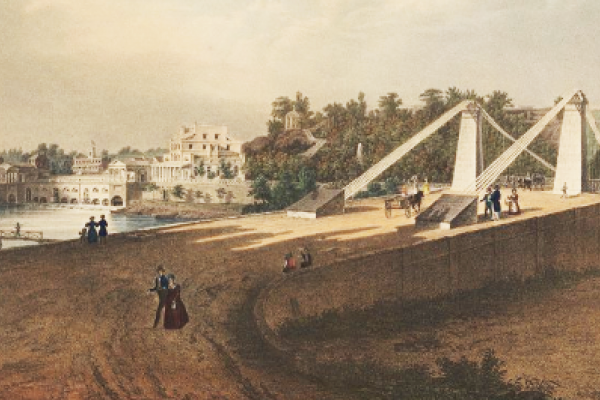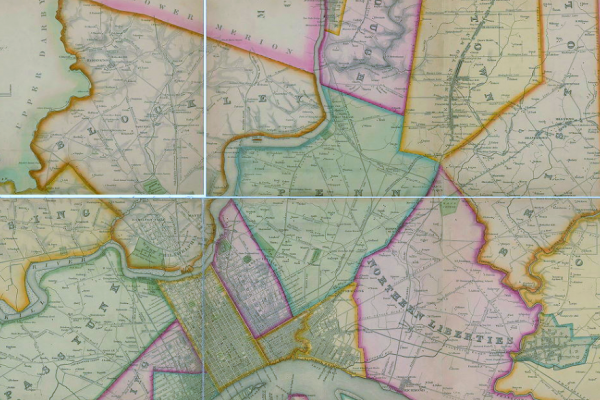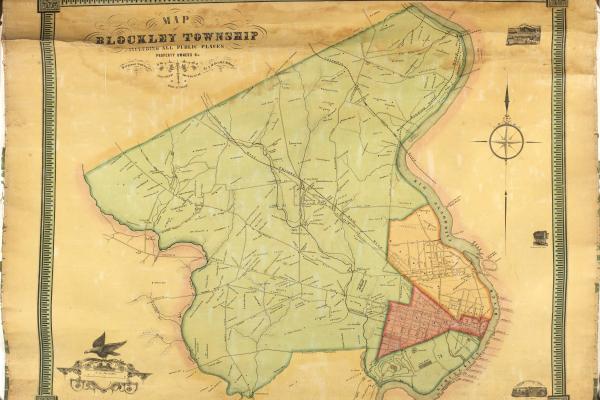Advanced Search

In 1834, the City completed moving its almshouse from the central city to the crest of a ridge above the Schuylkill River in West Philadelphia. The view is from the river’s east bank, with the Permanent Market Street Bridge shown at right..

In 1834, the City moved its almshouse to the crest of a ridge above the Schuylkill River in West Philadelphia. The view is from the river’s east bank, with the Permanent Market Street Bridge shown at right.

In 1834, the City moved its almshouse to the crest of a ridge above the Schuylkill River in West Philadelphia. The view is from the river’s east bank, with the Permanent Market Street Bridge shown at right.

Charles Ellet’s wire suspension bridge at Fairmount, built to replace William Wernwag’s bridge in 1842. The view is east from the West Philadelphia bank of the river, with the Fairmount Water Works in the center background.

Charles Ellet Jr.’s “A Map of the County of Philadelphia from Actual Survey, 1843” shows Blockley Township’s dominant control of Philadelphia County land west of the Schuylkill River.

William Edmund Horner, second curator of the Wistar Collection (1816-1853)

After it evolved to become the Philadelphia General Hospital, Blockley Almshouse was recalled as “Old Blockley.” This excerpt is from an early map showing the location of the Almshouse in West Philadelphia.
Jacob Mayland was the property owner and sawmill operator who gave his name to the village that sprang up in the 1850s around Mill Creek, near the creek’s point of outflow into the Schuylkill River.
Hestonville appears as a sparsely populated crossroads community at the junction of Lancaster Pike (now Avenue) and the “Old Lancaster Road” (now 54th St.).

Mill Creek in the mid-19th century, shown here flowing southeast from Mill Pond and Maylander Dam
Jones and George families’ lands above and below the West Philadelphia Railroad and Lancaster Pike.
